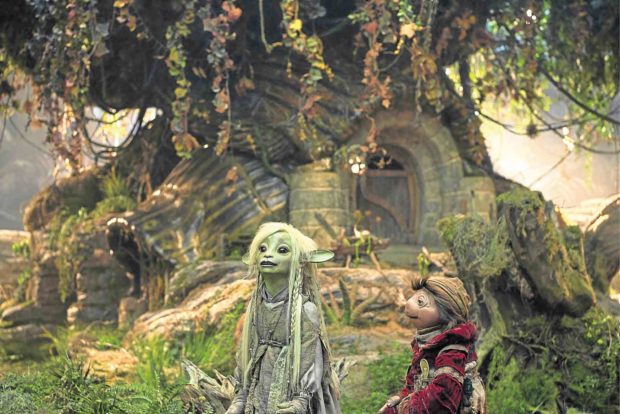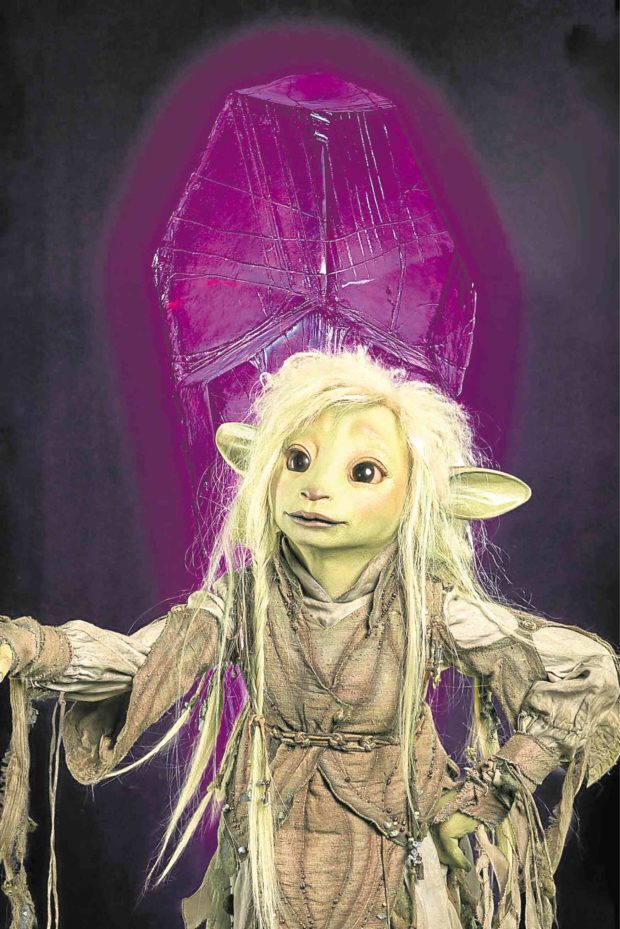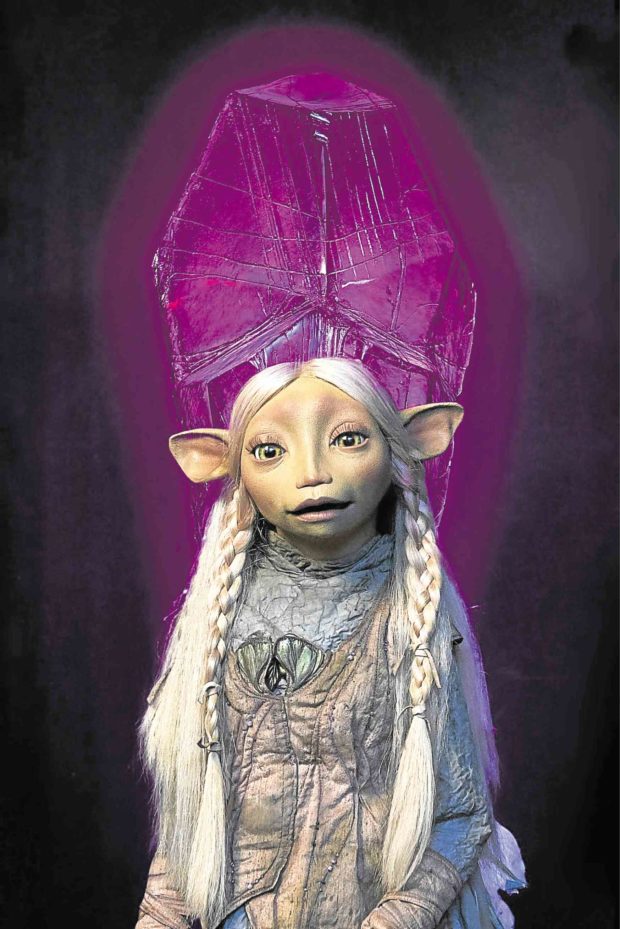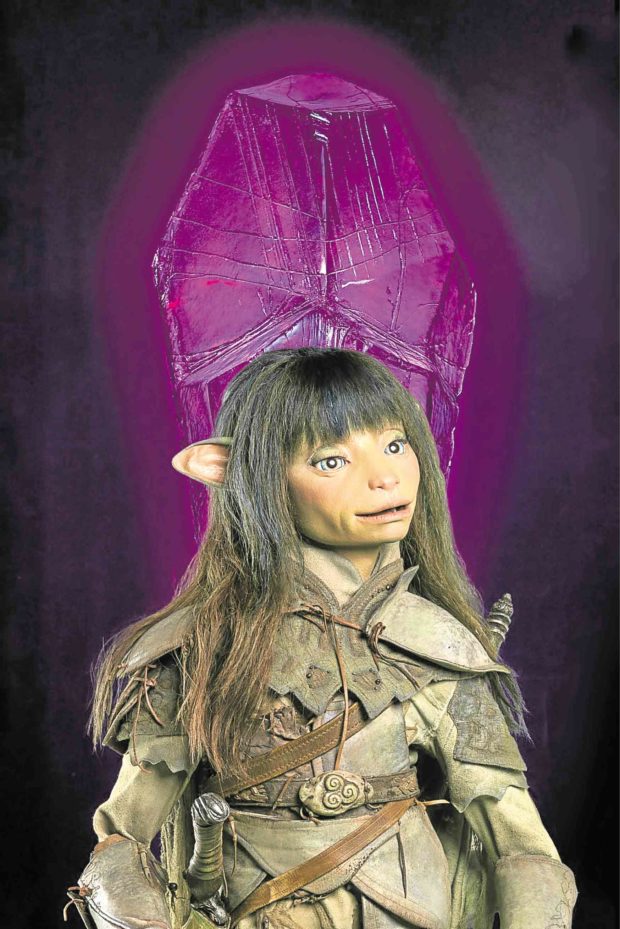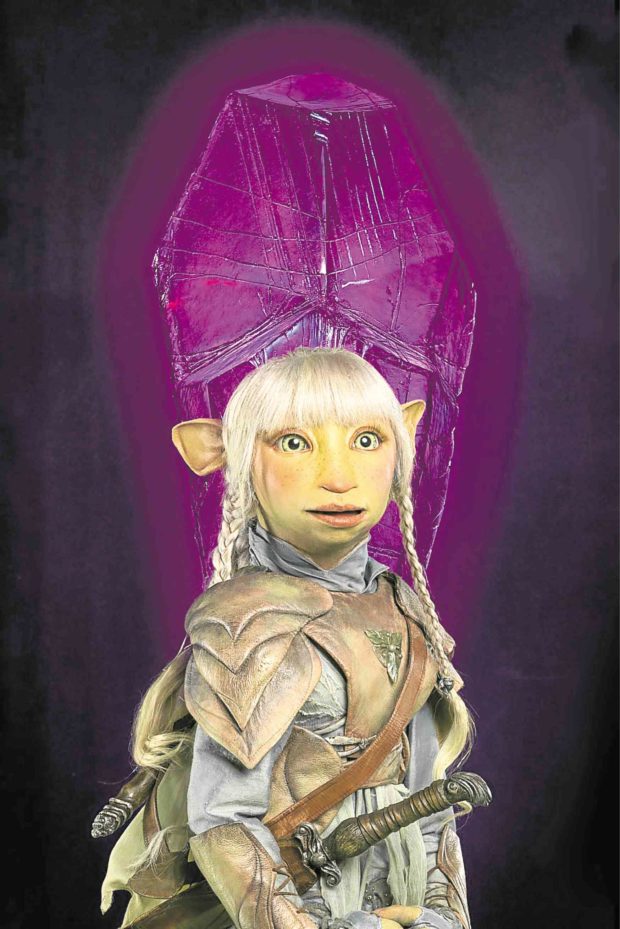Lisa Henson, Louis Leterrier talk about creating ‘Dark Crystal’ prequel
It’s barely four days away, and we’re already getting all worked up waiting for Netflix to start streaming the eagerly anticipated prequel to Jim Henson’s 1982 cult classic, “The Dark Crystal.”
So far, we have seen half of the 10-part series “The Dark Crystal: Age of Resistance,” which will begin streaming at 3 p.m. on Friday (Aug. 30).
The show follows the rebellion inspired by the actions of three elvish humanoids called Gelflings—Rian (Taron Egerton), Brea (Anya Taylor-Joy) and Deet (Nathalie Emmanuel)—against the increasingly abusive bird-like reptiles called Skeksis, made up of The Emperor (Jason Isaacs) and his sinister underlings (Simon Pegg, Awkwafina, Adam Samberg, Harvey Fierstein and, hold your breath, Mark Hamill).
If you found the 1982 original a little too dark and grim for your taste, you’ll be pleased to know that producer Lisa Henson, director-producer Louis Leterrier and their team have created a world bursting with bold, bright colors and inhabited by spellbinding creatures.
You can take our word for it: This is the world of Thra as you’ve never seen it depicted, onscreen or in graphic novels.
Article continues after this advertisement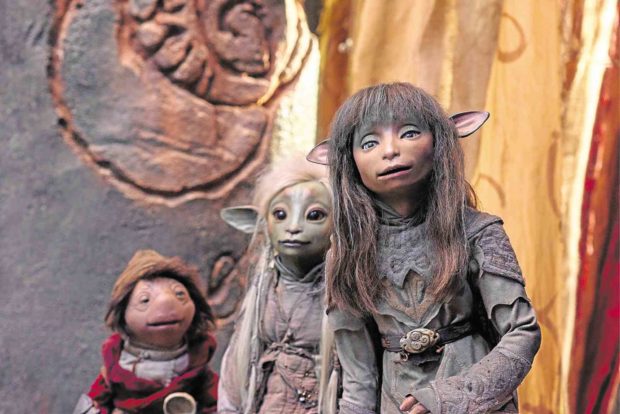
“The Dark Crystal: Age of Resistance” begins streaming its 10-episode first season on Aug. 30 at 3 p.m. on Netflix.
We grew up watching “The Muppets” and their many incarnations over the years, and we’re also a huge fan of Jason Statham’s action-packed “Transporter” films, so you can imagine how thrilled we were when we spoke to executive producer Lisa Henson, the eldest of Jim Henson’s five kids, and director-producer Louis Leterrier, the man behind Statham’s early actioners and Jesse Eisenberg’s “Now You See Me” film series, in a two-on-one video call to talk about how the show came about.
Article continues after this advertisementOur Q&A with Lisa and Louis:
I heard that it took you seven years to do the show. Why did it take that long, and what did you find most challenging about “The Age of Resistance”?
Lisa: I’ll speak about the show’s lengthy time frame, and Louis can talk about the challenges because he’s the problem solver (laughs). No kidding, there’s nothing he can’t do!
As a company and as a family, we have been wanting to go back to “The Dark Crystal” for many years, so we were considering doing a TV series or a feature-film sequel.
But Netflix came up with the idea to do a TV series that would be conceptualized like a movie—a premium, epic TV series that would have all the production values of movies on the big screen that is 10 episodes long. It’s a fantastic solution to the fact that we were having difficulty getting that feature film going. I think the time is ripe for “The Dark Crystal” because Netflix came along, whose medium is perfect for a TV show like this.
Louis: They gave us free rein—not just financially, but also in terms of storytelling. They were really on board with what we wanted to say and do with the puppets.
You have to understand that no other studio would commit to creating puppets three years in advance.
Netflix, on the other hand, was very happy with that arrangement, and they loved that we came in prepared.
The Henson Company has dug into the world of Thra and created an entire mythology of that world. We came in extremely prepared—we had designs, stories and amazing writers who took them on this journey, so they said, “Yeah, go for it!” But it was extremely difficult just the same.
Lisa: What was your biggest challenge, Louis?
Louis: Everything (laughs)! I mean, I finished last night, then I still saw three heads where there shouldn’t be on a frame—so, I said, “Erase, erase …”
It’s so complex to do, Rito. You have no idea what it’s like.
It was also very important to have a strong story. Once we have it, we sort of put away for a while the challenges of creating the puppets and focused on creating this beautiful 10-episode arc of a story, instead. Then, we were off to the races!
Personally, my biggest challenge was learning to shoot puppets. I am used to directing car chases (laughs), but I don’t shoot puppets with emotions.
So, Lisa, Brian Henson and the rest of the team took me by the hand and showed me the ropes. They’d say, “Watch this; this is how we do it …”
Lisa: We had a chance to test what we knew and learned a lot from it. Netflix put it this way: We know what your movies look like, but we don’t know how Louis’ “Dark Crystal” would work.
Louis: Once we showed them this little short film—which is actually a chase scene between a Gelfling and a Skeksis—we learned enough to move to the next stage. We continued to learn throughout that process.
The show looks like a puppet version of “Game of Thrones” and “Star Wars” because of the mythology expanded from the 1982 version. But, why did you choose to do a prequel, not a sequel?
Lisa: We were most intrigued by something else … There’s a scene in the movie where Gelflings Jen (voiced by Jim Henson himself) and Kira (Kathryn Mullen) find Gelfling ruins.
Kira ends up sitting on a throne, and she just looks perfect sitting there! They were young then, so they didn’t really get to see that civilization.
So, we said, “That’s going to be our jump-off point. We’re going to create that civilization and go back to a time when the Gelflings were in a prosperous time—it’s a beautiful, cultural, colorful time. It’s much more colorful than the original film, because in “The Dark Crystal,” decay and darkness have won, basically. We wanted to go back to a rich tapestry during a fresh period of time.
We actually worked on a sequel, by the way. It takes place after the movie, but we shelved that movie in favor of this TV show.
But we published it as a graphic novel, so anybody who wants to know the sequel, it’s in graphic novels.
Louis: People want to know more about the adventure after the movie ends, but there are so many questions about what led this civilization to go extinct. It was quite evident why we had to do a prequel, rather than a sequel.
Lisa, like the Muppets, you are a groundbreaker yourself, being the first female president of the Harvard Lampoon. And I noticed that there’s a very strong female voice in the series. Is that a conscious decision?
Lisa: (Laughs) We have four producers from The Henson Company who are all women, so that’s just who we are.
We brought a lot of female energy into the room while we were talking about the story and working with Louis and the writers.
Story-wise, there’s a strong feminine force in the Gelfling society because it’s a matriarchy, where each clan has its own matriarch.
More than that, we provided some great characters for female puppeteers, who told us that they were blown away by how good the roles were.
That being said, I think it’s a good balance, ultimately—it’s neither all-women nor all-men.
Louis: For once, it’s refreshing to be part of the minority on the set (laughs). But it wasn’t by necessity or design, but everything felt natural.
Louis, I was blown away by the huge number of big stars in the cast. What was it like for you to direct all those A-listers—Taron Egerton, Helena Bonham Carter, Caitriona Balfe, Lena Headey, Alicia Vikander, Mark Strong, Theo James, Jason Isaacs, Sigourney Weaver and Mark Hamill? Did you have specific ideas about how your actors should voice their characters?
Louis: That’s a big list, I know. Very intimate relationships are forged inside the studio—it’s them and me close to the microphone. So we find those voices together, based on situations and their characters. Like, how should a character with a wide nose or no nose sound?
Take Helena, for instance—she wanted to know all about the All-Maudra, the Gelfling Queen. It was interesting how we ended up developing their respective sounds. It was much like workshopping a character. Eventually, you get very precise with them.
As you see, it wasn’t just another dubbing job. It was collaborative. The actors brought so much personality into their characters. They knew what words to change to make them fit their characters better.
To answer your question about the formidable cast we have, I think it speaks to the legacy of Jim Henson. He has touched everyone—young and old, men and women, and everybody around the world! Jim has changed our lives forever.
When you are as famous as these stars and you’re offered a Jim Henson legacy project, you [don’t pass it up]. And nobody did. It was crazy—every time we’d think of this or that actor, if he is available, he’d say yes.
